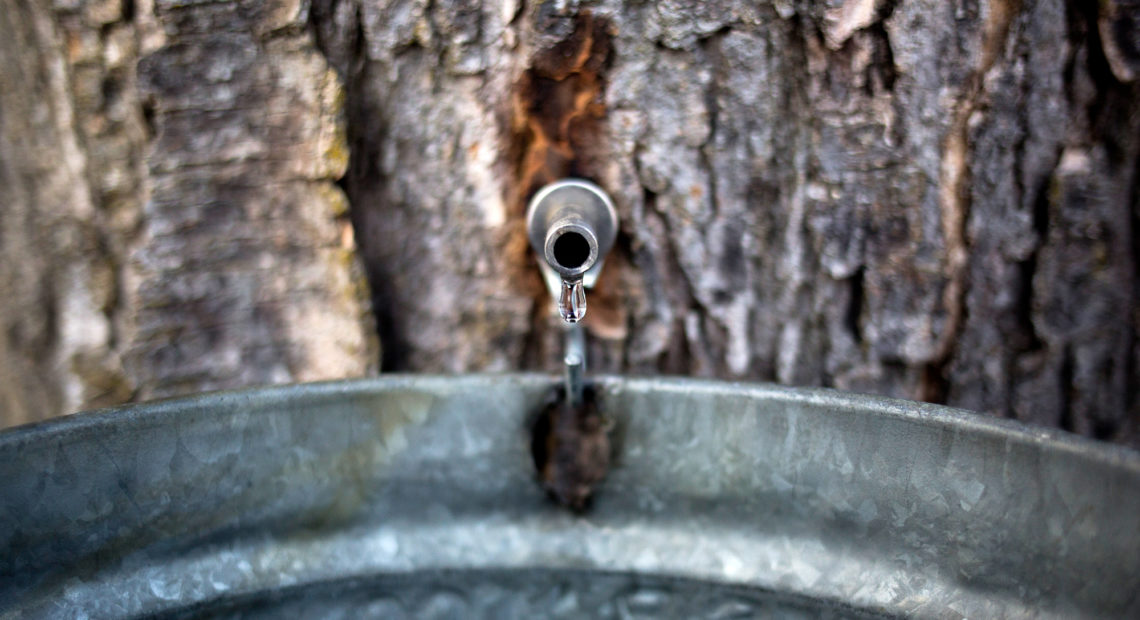
Climate Change Could Mean Less Maple Syrup For Your Pancakes
BY JODI HELMER
Maple syrup might be ubiquitous in pantries and pancake houses now, but new research suggests that might not always be the case. Climate change could eventually render the sticky stuff extinct.
A study published last month in the journal Ecology examined assessed how environmental conditions impacted the growth of more than 1,000 sugar maple trees at four forest sites in Michigan between 1994 and 2013. The findings were sobering: Climate change has led to warmer, drier growing seasons, stunting the growth of sugar maples.
Lead researcher Inés Ibáñez, ecology professor at the University of Michigan, used climate modeling to forecast the fate of sugar maples if nothing is done to curb greenhouse gas emissions.
“The biggest trees will still be there, but won’t be growing as much and the little saplings won’t survive, [so] once the older trees start dying, there will be no new trees to replace them,” she says.
Although Ibáñez studied tree growth, not sap production, she notes that the two go hand-in-hand.
“If a tree stops growing, it won’t be as productive,” Ibáñez explains.
In 2017, the average U.S. sugar maple tap produced about one-quarter of a gallon, while Vermont’s taps flowed to a little more than one-third of a gallon.
But it takes time for a tree to reach the right size for tapping. A sugar maple tree trunk must be at least 10 inches in diameter at chest height to be tapped; trees over 15 inches in diameter can accommodate two taps; four taps can be installed in trees over 25 inches in diameter, according to the Minnesota Department of Natural Resources. Sugar maple trees are productive for 100-plus years, but that could all be changing.
The climate change model looked at the most extreme scenario, which assumes carbon dioxide emissions will remain at their current levels for the next century.
Research published in 2017 also found that climate change could cause sugar maple habitat to decline and suggests that it would take an additional five million taps to maintain current U.S. production levels, which totaled 4.27 million gallons last season.
But Mark Isselhardt, maple extension specialist at the University of Vermont, says maple syrup makers are already adapting.
For sap to flow, temperatures need to be below freezing at night and above freezing during the day. Sugaring season used to kick off around March but has started as early as January in the last few seasons because the weather is warmer earlier. The season is shorter, too.
Still, “sugar-makers tend to be very proactive and there are lots of management approaches they can take — and are taking — to limit the potential climate effects,” he says.
Improved sanitation practices, such as changing taps and tubing to reduce contamination and decrease bacteria buildup in the tap hole, and exploring the potential to collect sap in the fall could help preserve the harvest.
Sustainable forest management can also protect the health and longevity of sugar maples. Isselhardt notes that a forest where at least 25 percent of the trees are species other than maple can help protect against pests.
Advances in vacuum tubing technology, which has been around since the 1970s and uses pressure to suck sap out of the tree rather than relying on gravity for sap to drip from taps into metal buckets, continues to expand, helping bolster sap collection, according to Stephen Childs, New York State maple specialist at Cornell University.
“We need to pay attention to climate change but when we look at what maple producers have done to overcome the impacts of climate change, it’s clear that they are adjusting,” Childs says.
However, the impact of warming temperatures cannot be ignored.
In 2012, despite sugar-makers in New England placing 5 percent more taps, a spate of 75-degree temperatures in March led to a 27 percent drop in maple syrup production over the previous season. The local field office of the U.S. Department of Agriculture National Agricultural Statistics Service put out a report titled, “2012 Maple Season Too Warm.”
The bottom line: Research may show that it could take another 80 years for the demise of sugar maple trees to occur, but stocking up on maple syrup now will protect against dry pancakes in the future.















